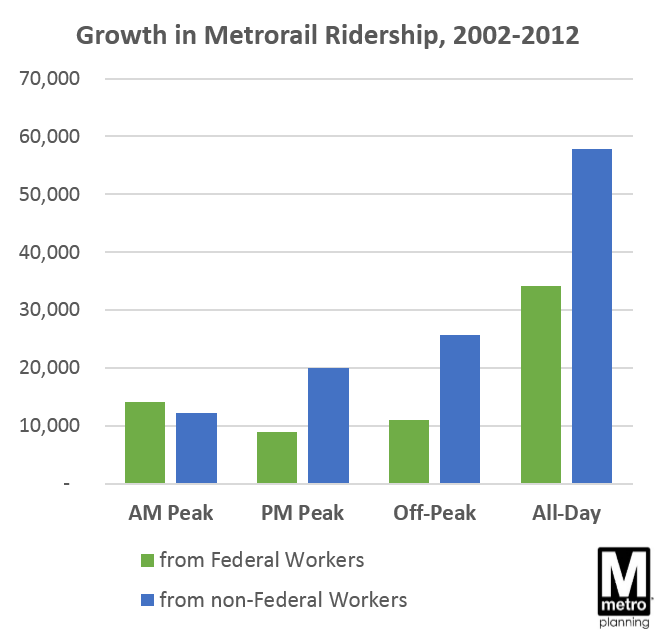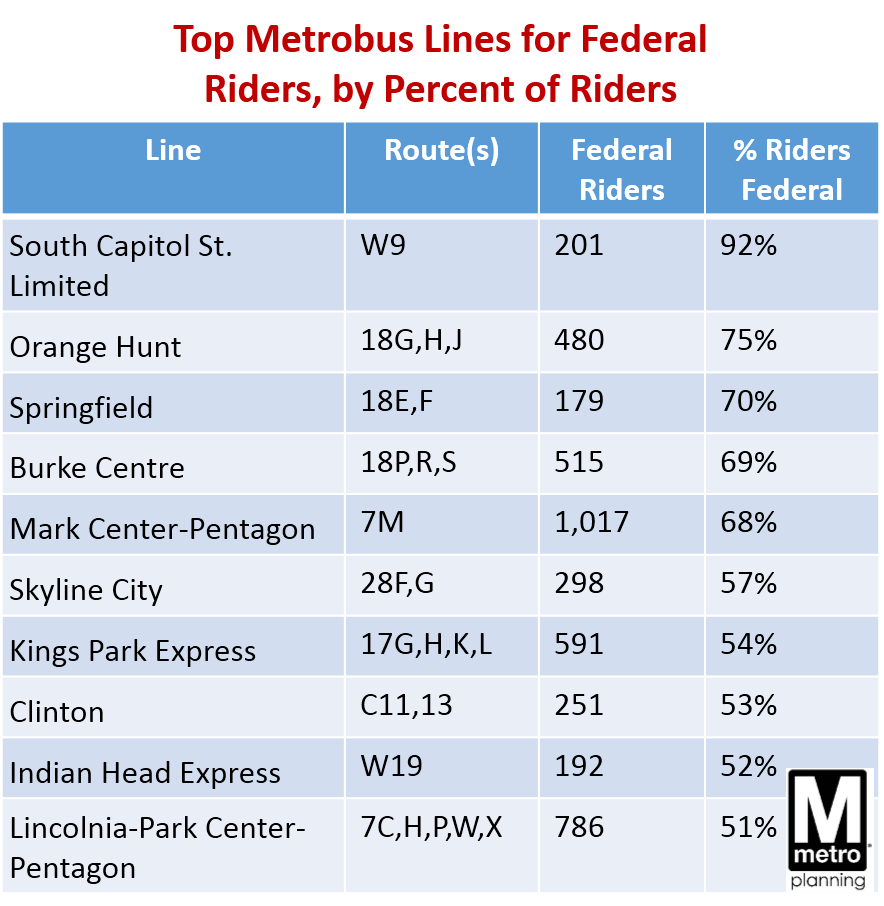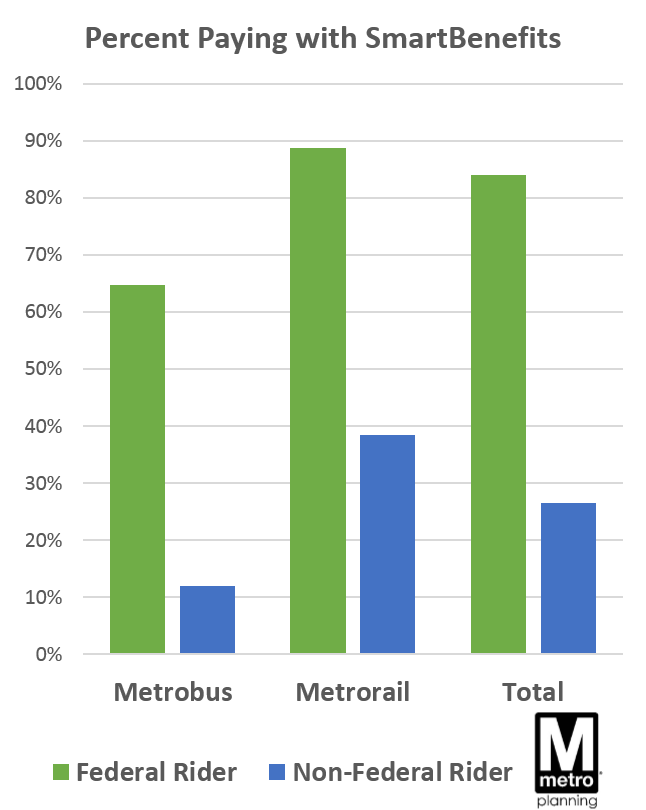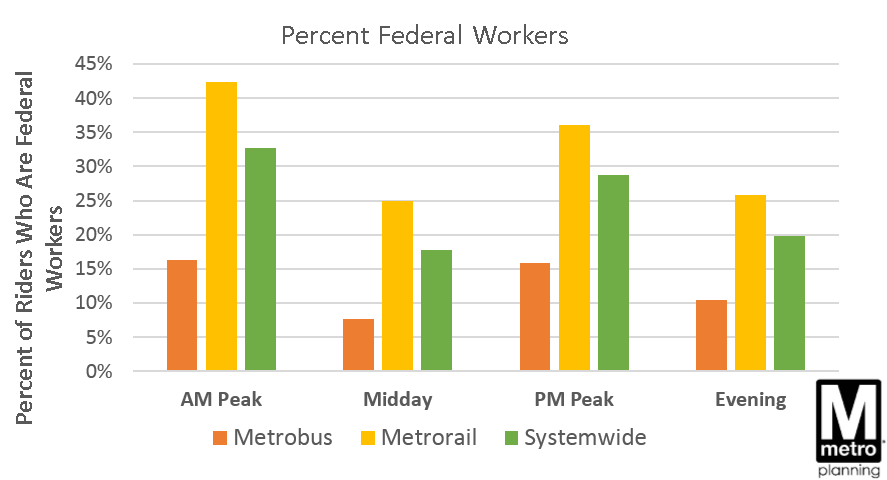The answers to these four questions will shape the future of Metro’s federal customers, and the region’s transportation future. (Fifth and last in a series of posts on Metro’s Federal customers – see posts 1, 2, 3, and 4)

The ATF headquarters adjacent to NoMa Metrorail station has helped grow ridership there significantly.
1. Will the transit benefit be restored to parity with parking? When Congress cut the transit benefit in half, it hurt Metro riders hard. 42% of Metro’s ridership – around 500,000 rail and bus trips per day – comes from riders who use the Federal Transit Benefit, including private-sector workers. At Metro, 22% of all ridership comes from commuters who spend over $130 per month on transit. Following the changes to the SmartBenefits program, Metro saw ridership losses concentrated on these riders hit the hardest, and federal employees overwhelmingly pay with SmartBenefits.
If Congress restores the maximum transit benefit to parity with parking, it would be a huge boon to Metro’s federal customers and Metro’s bottom line. Read more…
Data show that where GSA chooses to locate federal office buildings has a huge impact on Metrorail ridership from federal commuters. But in the meantime, non-Federal riders in the inner jurisdictions are driving up ridership outside of the usual commute market. (Fourth in a series of posts on Metro’s Federal Customers – see posts 1, 2, and 3)
 Between 2002 and 2012, rail ridership from federal employees has grown 15%, the same as from non-federal riders. (N.B. this post focuses on rail only; no comparable survey data for bus is available.) Federal employees have remained about a third of total ridership, as overall ridership ebbed and flowed. Most of these new federal riders live in the inner jurisdictions of D.C., Arlington, and Alexandria – ridership from federal employees has been much slower in the outer jurisdictions, particularly Fairfax County (growing at 5-15%, vs. 25-40% over ten years). The growth from federal riders has mimicked existing riders – they are focused on the peak commute too, with a moderate amount of off-peak travel as well.
Between 2002 and 2012, rail ridership from federal employees has grown 15%, the same as from non-federal riders. (N.B. this post focuses on rail only; no comparable survey data for bus is available.) Federal employees have remained about a third of total ridership, as overall ridership ebbed and flowed. Most of these new federal riders live in the inner jurisdictions of D.C., Arlington, and Alexandria – ridership from federal employees has been much slower in the outer jurisdictions, particularly Fairfax County (growing at 5-15%, vs. 25-40% over ten years). The growth from federal riders has mimicked existing riders – they are focused on the peak commute too, with a moderate amount of off-peak travel as well.
But over the same timeframe, non-federal customers drove up ridership much faster in the PM Peak and Off-Peak times. These riders similarly come from the inner jurisdictions. Read more…
Employees of the federal government comprise 27% of Metro’s weekday ridership, but what rail stations and bus routes are they using?
(Second in a series of posts on Metro’s Federal Customers – see post 1)
On Metrobus, federal workers are about 10-20% of most bus routes’ ridership, with a few logical exceptions. Federal ridership is higher on bus routes that are more “peaked” and commute-oriented, and/or on routes that directly serve federal facilities.

Read more…
Metro’s federal customers pay fares a little differently than other riders. Why is that such a big deal for Metro’s financial future?
(Third in a series of posts on Metro’s Federal customers – see posts 1 and 2)
 Compared to other riders, Metro’s federal customers are much more likely to pay their fare using SmartBenefits. SmartBenefits are the type of funds you load onto your SmarTrip card – usually through your employer, either as direct subsidy, or a certain amount of pre-tax dollars you set aside for transit fares. Metro riders in the Washington region may know the program manager WageWorks.
Compared to other riders, Metro’s federal customers are much more likely to pay their fare using SmartBenefits. SmartBenefits are the type of funds you load onto your SmarTrip card – usually through your employer, either as direct subsidy, or a certain amount of pre-tax dollars you set aside for transit fares. Metro riders in the Washington region may know the program manager WageWorks.
(Importantly, SmartBenefits is not exclusively a federal government benefit! On the contrary, non-federal workers are nearly half the overall enrollment in the SmartBenefits program, and 42% of Metro’s overall ridership comes from riders paying with SmartBenefits. We’ll make clear the difference between SmartBenefits and SmartTrip in an upcoming Metro 101 post – stay tuned.)
84% of federal employees on Metro pay their fare with SmartBenefits, compared to 27% of non-federal customers. In addition, federal customers tend to pay higher fares on rail – because federal workers typically take longer trips and ride more at peak times (average peak fare $3.00, vs. $2.87 non-federal customers).
Finally, 87% of Metro’s federal customers pay using “stored value” (pay-as-you-go funds), rather than a weekly or a monthly pass. Very few still use paper tickets or passes – but this is similar to other riders.
Read more…
Think Metro is all about getting the federal commuters to work? Think again!
(First in a series of posts on Metro’s customers who are Federal Government employees)
Just as the workforce in the Washington region has a sizeable share of federal workers, so has Metro’s ridership. Metro serves major federal employment centers downtown, and even boasts stations named for the federal sites they serve, like Federal Triangle, Medical Center, and Pentagon. But while Metro has a long supported the federal government, it’s a myth that Metro is all about federal government commuters and nothing more. Federal workers are a minority of riders and have been for years, and federal funding is playing an increasingly smaller role in Metro’s finances.
So just who are Metro’s federal customers? When and what do they ride? Where are they coming from and going to, and how has this changed in the last decade? The next series of posts seeks to answer just that, using passenger survey data (bus and rail) where customers identified as employees of the federal government or not (contractors excluded).
How Many, Where, and When? About 27% of all Metro weekday trips are made by federal workers – a total of 317,000 boardings across bus and rail. These federal employees can be anyone from a nurse at Walter Reed Medical Center, to a military officer at the Pentagon, to a Congressional staffer on Capitol Hill. The majority of these trips (255,000) are made on Metrorail, where federal workers make up 35% of all boardings (all-day). The remainder – just over 60,000 boardings from federal workers – happen on Metrobus, where riders are generally less likely to be federal workers (14% of all bus boardings are federal).
 Read more…
Read more…







Recent Comments